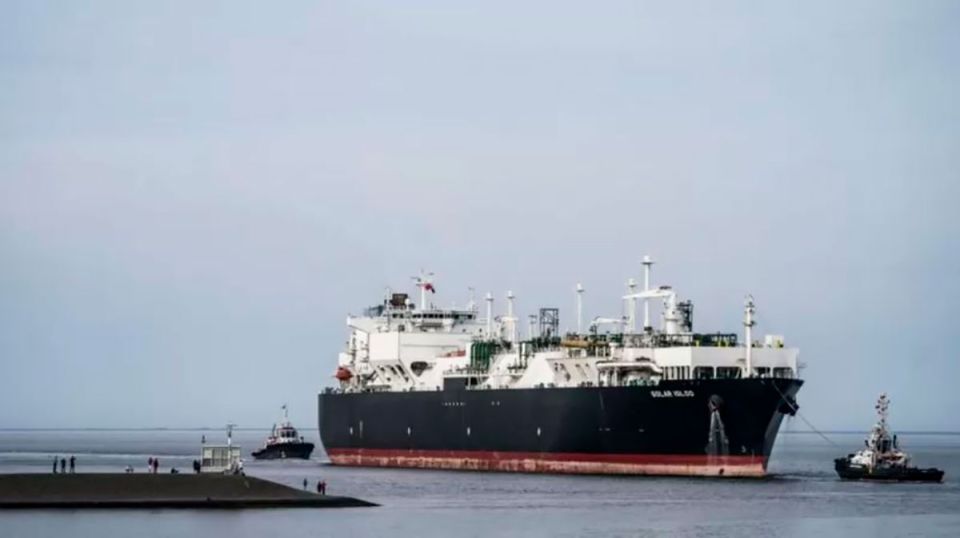Amid escalating fuel prices, queues of tankers are building up in many European ports waiting to unload their cargoes.
The huge tankers await. Dozens of giant ships filled with liquefied natural gas (LNG) are off the coast of Spain, Portugal, the United Kingdom and other European nations.
Despite the great demand for this fossil fuel, which is cooled to about -160 degrees Celsius for transportation, there are tankers that have been waiting days to deliver their precious cargo.
After invading Ukraine last February, Russia cut gas supplies to Europe, triggering an energy crisis that sent gas prices skyrocketing. This sparked fears of power shortages and soaring consumer bills.
“It’s been going on for about 5 or 6 weeks,” said Augustin Prate, vice president of Energy and Commodity Markets at Kayrros, one of many observers who have followed the development of the situation.
He and his colleagues track ships using Automatic Identification System (AIS) signals, which ships transmit to receivers, including satellites.
“It’s clearly a great story,” he said.
The motives
Why are LNG laden ships lurking around Europe? The answer, as you may have guessed, is a bit complicated.
Fraser Carson, a research analyst at Wood Mackenzie, has also been monitoring the situation and has counted 268 LNG carriers worldwide, notably above the annual average of 241. Of those currently at sea, 51 are in the vicinity of Europe.
The expert explained that European countries began to buy gas during the summer with the aim of filling storage tanks on land. The objective? Guarantee the availability of fuel to cover energy needs this winter.
The original goal was to have its deposits at 80% capacity before November 1. However, this has been achieved, and even exceeded, much sooner than expected. The latest data suggests that storage is now at almost 95%.
But as LNG continues to wash ashore, demand is high for facilities that heat the fuel from a liquid state and convert it back to gas. To this we must add that there are not many plants of this type in Europe, in part because the continent depended for a long time on gas supplied by Russia, through gas pipelines.
That is one of the reasons tankers are waiting: some are queuing to access the regasification terminals.
To the race
Germany and the Netherlands have started building on new regasification facilities. Some, quickly built with converted LNG carriers berthed at docks, are expected to be operational within months.
Another reason for this bottleneck is that Europe is consuming less gas than is traditionally consumed at this time of year, because temperatures have remained relatively high well into October.
In addition, as Antoine Halff, co-founder of Kayrros, pointed out, the industrial activities that depend on this fuel have reduced their consumption.
“There has been a very drastic drop in cement and steel production in Europe,” he said.
Making accounts
There is also another ingredient, and that is that a situation called “contango” has been presented in the market, which means delaying the delivery of a product because its future price will be higher than the current one.
“The price you will get for delivering it in January will be higher than delivering it in November,” he explained.
Michelle Wiese Bockmann, markets editor and analyst at shipping magazine Lloyd’s List, said that just by waiting to deliver a shipment in December instead of November, the benefits could be in the tens of millions of dollars.
Although buyers from other parts of the world may end up buying cargoes from some ships waiting off European coasts, meaning they could leave and head to Asia, for example, Europe stands to benefit from having an excess of LNG. literally floating in its seas.
Some observers said that the fact that the ships wait is partly a positive thing, since it implies that gas is available when it is needed.
The only problem is in the money. The feverish demand for gas means that countries have already paid extraordinary amounts to get it.
Germany spent $48.849 million on imports between January and August, Reuters reported. In the same period of the previous year the figure was US$ 16,875 million.
Uncertain future
Both Bockmann and Carlson argue that European countries are in an advantageous position, despite the geopolitical environment.
The real question is what will happen next. With gas secured at least for the next few weeks, the price of the raw material in Europe has begun to fall.
But further supply disruptions and very cold winter months could change the picture.
The world situation must also be taken into account. Rising demand for LNG imports in Europe has fueled competition for the gas around the world. Countries like Pakistan and Bangladesh, which depend on LNG but have less financial clout in the market, have been hurt by the situation.
Some of the LNG that traditionally went to Asia has ended up in Europe. It’s been a “great game of musical chairs,” Halff said.
But some Asian countries, notably China, Japan and South Korea, which also use a lot of LNG, are likely to seek large imports in the colder months, which could fuel competition between continents.
Corey Grindal, chief operating officer and head of global trade for LNG producer Cheniere, said what is happening in the market is “a very short-term phenomenon.”

